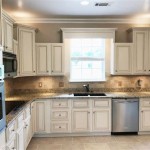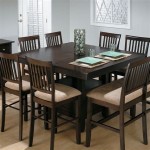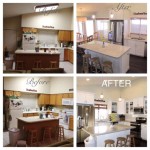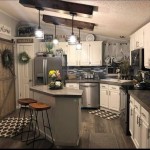Green Walls in the Kitchen: Integrating Nature for Culinary Enhancement
The integration of natural elements into interior design has gained significant traction in recent years, with green walls emerging as a prominent trend. These living walls, also known as vertical gardens, offer a blend of aesthetic appeal and functional benefits, making them increasingly popular in residential and commercial spaces. Among the rooms in a home, the kitchen, often considered the heart of the house, stands to gain particularly from the implementation of a green wall. This article explores the advantages, considerations, and practical aspects of incorporating green walls into kitchen design.
A green wall, in its simplest form, is a vertically constructed surface covered with plants. These installations can range from small, modular systems to large, elaborate designs that span entire walls. The plants are typically grown in a substrate attached to the vertical surface, and an integrated irrigation system provides the necessary water and nutrients. The complexity of the system depends on various factors, including the size of the wall, the types of plants used, and the desired level of automation.
The growing appeal of green walls stems from their capacity to transform sterile or uninspired spaces into vibrant, living environments. In the context of the kitchen, a green wall can soften the often-utilitarian nature of the room, introducing a sense of calm and connection to nature. This can be particularly beneficial in modern kitchens that often feature hard surfaces like stainless steel and granite, which can feel cold and impersonal.
Aesthetic and Psychological Benefits
The primary advantage of a green wall in the kitchen is its aesthetic appeal. The introduction of greenery provides visual relief and adds a layer of texture and color to the space. This can be especially effective in kitchens with limited natural light or views, where the green wall serves as a focal point and brings a touch of the outdoors inside. The visual richness of a living wall can elevate the overall design of the kitchen, creating a more inviting and enjoyable environment.
Beyond their visual appeal, green walls offer psychological benefits. Studies have shown that exposure to plants can reduce stress, improve mood, and enhance cognitive function. In the kitchen, where food preparation and consumption take place, a calming and positive atmosphere can contribute to a more enjoyable cooking and dining experience. The presence of plants can also create a sense of well-being and connection to nature, counteracting the often-hectic pace of modern life.
Furthermore, the selection of plants for a green wall offers an opportunity to personalize the kitchen design. A variety of colors, textures, and growth habits can be incorporated to create a unique and visually dynamic display. Low-maintenance options, such as succulents and ferns, are often chosen for their ease of care, while more ambitious installations may incorporate edible plants like herbs and leafy greens, providing a fresh and convenient source of ingredients for cooking.
Environmental and Functional Advantages
In addition to their aesthetic and psychological benefits, green walls offer several environmental and functional advantages. One of the most significant is their ability to improve indoor air quality. Plants absorb carbon dioxide and release oxygen through photosynthesis, contributing to a healthier and more breathable environment. They also filter out pollutants and toxins from the air, such as formaldehyde and benzene, which can be emitted from building materials and household products.
The air-purifying capabilities of green walls are particularly relevant in the kitchen, where cooking activities can generate airborne particles and odors. By absorbing these contaminants, the green wall helps to maintain a cleaner and fresher atmosphere. This can be especially beneficial for individuals with allergies or respiratory sensitivities.
Green walls can also contribute to noise reduction. The plants and substrate absorb sound waves, reducing reverberation and dampening ambient noise. This can be a valuable asset in open-plan kitchens, where noise from cooking and appliances can be disruptive. By creating a quieter and more acoustically comfortable environment, the green wall enhances the overall functionality of the kitchen.
Moreover, green walls can provide thermal insulation, helping to regulate the temperature of the kitchen. The plants and substrate act as a barrier against heat transfer, reducing the need for air conditioning in the summer and heating in the winter. This can lead to energy savings and a more sustainable home environment.
Practical Considerations for Installation and Maintenance
The successful implementation of a green wall in the kitchen requires careful planning and consideration of several practical factors. One of the most important is the selection of an appropriate location. The green wall should be positioned in an area that receives adequate light, either natural or artificial. Insufficient light can lead to stunted growth and a decline in plant health. The location should also be easily accessible for maintenance purposes, such as watering and pruning.
The choice of plants is another critical consideration. The plants should be well-suited to the kitchen environment, which is typically characterized by high humidity and fluctuating temperatures. Low-maintenance options are generally preferred, as they require less frequent watering and fertilization. Herbs, leafy greens, and certain types of succulents and ferns are popular choices for kitchen green walls.
The design and construction of the green wall system are also essential. There are several different types of systems available, including modular panels, felt pockets, and hydroponic systems. The selection of a system depends on factors such as the size of the wall, the budget, and the desired level of automation. A well-designed system should provide adequate drainage and ventilation to prevent waterlogging and root rot.
Maintenance is an ongoing requirement for green walls. Regular watering, fertilization, and pruning are necessary to keep the plants healthy and vigorous. The frequency of watering depends on the type of plants, the climate, and the design of the system. Fertilization is typically required every few weeks to provide the plants with the necessary nutrients. Pruning is important to maintain the shape and size of the green wall and to remove any dead or diseased foliage.
In addition to regular maintenance, it is important to monitor the green wall for pests and diseases. Early detection and treatment can prevent infestations from spreading and causing significant damage. Common pests that affect green walls include aphids, spider mites, and mealybugs. Diseases such as root rot and fungal infections can also occur if the plants are not properly cared for.
For those who are not comfortable with the maintenance requirements of a living green wall, there are artificial options available. These faux green walls mimic the appearance of real plants and require no watering, fertilization, or pruning. While they do not offer the same environmental or functional benefits as living green walls, they can still provide aesthetic appeal and create a sense of connection to nature.
The cost of installing and maintaining a green wall can vary widely depending on the size, complexity, and type of system. DIY kits are available at a lower cost, but they may require more effort and expertise to install. Professional installations are more expensive, but they offer the advantage of expert design and construction. The ongoing maintenance costs include water, fertilizer, and pest control products.
Selecting Appropriate Plants
The selection of appropriate plants is paramount to the success of a kitchen green wall. Plants must be able to tolerate the specific environmental conditions of the kitchen, which often include fluctuating temperatures, higher humidity levels, and potentially limited natural light. Furthermore, consideration should be given to the aesthetic qualities of the plants, ensuring they complement the overall design of the kitchen.
Several plant species are well-suited for kitchen green walls. Herbs like mint, basil, and parsley are not only aesthetically pleasing but also provide fresh ingredients for cooking. These herbs thrive in moist environments and can tolerate moderate levels of light. Leafy greens such as spinach and lettuce can also be grown successfully in a green wall, offering a convenient source of fresh produce.
Succulents are another popular option for kitchen green walls due to their low maintenance requirements. These plants store water in their leaves and stems, making them drought-tolerant and easy to care for. Succulents come in a wide variety of shapes, sizes, and colors, providing ample opportunities for creative design. Certain ferns, such as the maidenhair fern and the staghorn fern, can also thrive in the humid environment of the kitchen.
When selecting plants for a kitchen green wall, it's crucial to consider their growth habits. Some plants may grow too large for the space, requiring frequent pruning. Others may be invasive, spreading rapidly and crowding out other plants. It is also important to choose plants that are non-toxic, especially if there are children or pets in the home.
The arrangement of plants in the green wall should be carefully planned to create a visually appealing and harmonious design. Plants with contrasting colors, textures, and growth habits can be combined to create a dynamic and interesting display. Taller plants should be placed at the back of the wall, while shorter plants should be positioned in the front. The overall design should take into account the available light and ventilation, ensuring that all plants receive adequate resources.

10 Beautiful Kitchens With Green Walls

The Best Dark Green Kitchens Like Ever Jessica Brigham

10 Beautiful Kitchens With Green Walls

Let S Try New Colors Sage Green Kitchen Country Floors Of America Llc

Grey Kitchen Cabinets Against Sage Green Walls In An Attic Apartment Coco Lapine Designcoco Design

Apple Green Kitchen Walls Contemporary Other Houzz

20 Green Kitchen Ideas For A Fresh Cooking Space Real Homes

Green Kitchen Ideas Decorating With Shades From Sage To Forest

Dark Green Kitchen Walls Gorgeous Ideas For A Bold Modern Look Melanie Jade Design

Grey Kitchen Cabinets Against Sage Green Walls In An Attic Apartment Coco Lapine Designcoco Design








